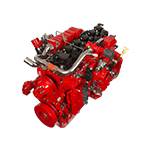Oct . 11, 2024 04:47 Back to list
brake drum vs brake disc
Brake Drum vs. Brake Disc A Comprehensive Comparison
When it comes to automotive braking systems, the choice between brake drums and brake discs has sparked significant debate among car enthusiasts, mechanics, and manufacturers. Each system has its own set of advantages and disadvantages, and understanding these differences is crucial for automotive professionals and consumers alike. This article aims to explore the characteristics, performance, maintenance, and applications of brake drums and brake discs.
Design and Functionality
Brake drums and brake discs operate on different principles of braking technology. Brake drums consist of a cylindrical component that rotates with the wheel. When the driver presses the brake pedal, brake shoes inside the drum expand outward, pressing against the inner surface of the drum to create friction. This motion slows down the vehicle.
On the other hand, brake discs utilize a flat, rotor-like structure that spins in conjunction with the wheel. When the brake pedal is engaged, calipers squeeze brake pads against the outer surface of the disc, generating friction and deceleration. This system is often referred to as a disc brake system.
Performance and Efficiency
One of the significant differences between brake drums and brake discs is their performance under varying conditions. Disc brakes generally offer superior stopping power and heat dissipation compared to drum brakes. When brakes are applied, they generate heat due to friction. Drum brakes can retain heat, leading to brake fade, which diminishes their effectiveness. In contrast, the open design of disc brakes allows for better airflow around the rotor, promoting quick cooling and consistent stopping performance.
Brake Drum vs
. Brake Disc A Comprehensive ComparisonMaintenance and Longevity
brake drum vs brake disc

While drum brakes might initially appear cheaper to produce and install, they can require more frequent maintenance. The enclosed design of drum brakes makes them susceptible to moisture, dirt, and debris, which can lead to corrosion and wear. Regular adjustments and replacements of brake shoes are necessary to maintain optimal performance.
Conversely, disc brakes are often easier to inspect and service. The components are more accessible, and wear indicators on the brake pads provide visual cues for when replacement is needed. Given this, many modern vehicles favor disc brakes for their reduced maintenance intervals and longevity.
Applications and Suitability
Understanding the applications of each braking system is crucial for automotive design. Traditionally, brake drums were more common in older vehicles and certain utility applications due to their ability to handle heavy loads. Many trucks and vans still use drum brakes on the rear axle for this reason.
However, with the advancement in automotive technology, disc brakes have gained popularity. They are now standard on many modern vehicles, particularly performance, sports, and upper-end models. The combination of superior performance, reduced maintenance needs, and improved safety features has led to disc brakes becoming the preferred choice for most new cars.
Conclusion
In conclusion, the debate between brake drums and brake discs boils down to multiple factors, including performance, maintenance, cost, and suitability for specific applications. Disc brakes offer advantages in terms of heat dissipation, wet-weather performance, and ease of maintenance, making them the go-to option for modern vehicles. Brake drums, while still relevant in certain scenarios, primarily serve specific industries or older vehicles.
Ultimately, understanding the differences between brake drum and brake disc systems allows consumers and automotive professionals to make informed choices. Whether you prioritize performance, maintenance, or cost-effectiveness, knowing your options can lead to better safety and efficiency on the road.
-
HINO Industrial Efficiency-Jiangsu Hino Industrial|Productivity Optimization&Cost Reduction
NewsJul.12,2025
-
HINO-¡Ң���ຽ��е��������˾|Advanced Industrial Solutions&Energy Efficiency
NewsJul.12,2025
-
Premium Brake Drum Iveco – Durable Drum Brake Drum & Brake Shoe Solutions
NewsJul.08,2025
-
High-Performance Brake Drum Liza for Enhanced Safety Reliable Drum Brake Drum & Brake Shoe Solutions
NewsJul.08,2025
-
High-Quality Brake Drum MAZ – Durable Drum Brake Drum & Brake Drum and Brake Shoe for Optimal Performance
NewsJul.07,2025
-
High-Quality Brake Drum Kamaz for Reliable Performance Durable Drum Brake Drum & Brake Shoes
NewsJul.07,2025
